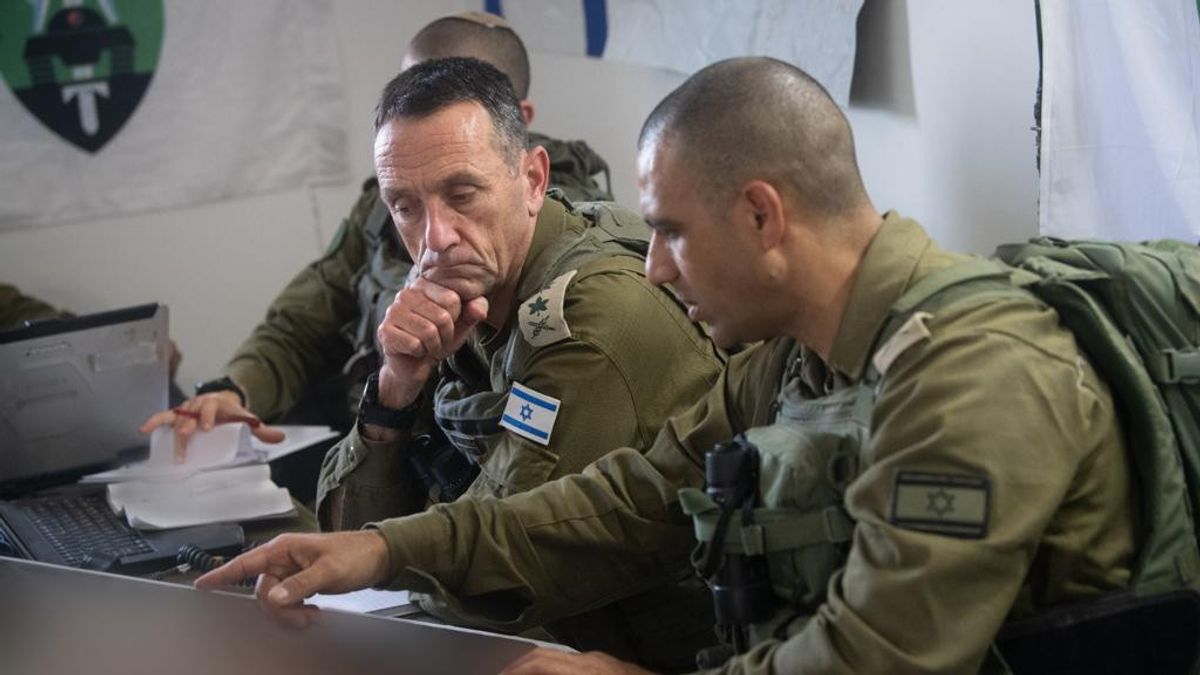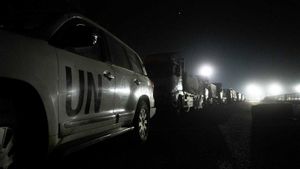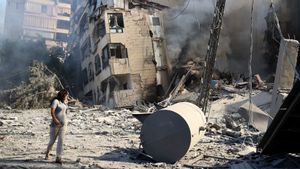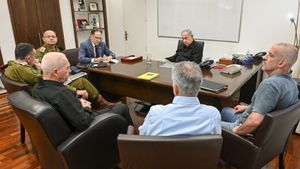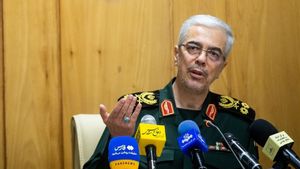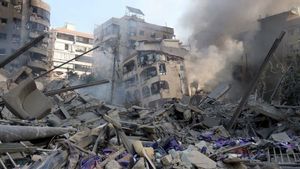JAKARTA - Israel Defense Forces (IDF) fired two senior officers and strongly rebuked a number of high-ranking commanders, as a result of an investigation into an airstrike that killed humanitarian workers from World Central Kitchen (WCK) earlier this week.
An investigation into Monday night's incident, which killed seven humanitarian workers, was carried out by the General Staff Fact Finding Assessment Mechanism, an independent military agency responsible for investigating an unusual incident in the middle of the war, reported The Times of Israel April 5.
The investigation found the attack ordered against a convoy of WCK vehicles, after officers suspected the vehicle was carrying a man armed with Hamas, although its confidence level was low, and violated military regulations. According to the investigation, officers did not identify the vehicle as WCK's when ordered to be attacked.
The findings were presented to IDF Chief of Staff Lt. Gen. Herzi Halevi on Thursday by the head of the mechanism, Major General (res.) Yoav Har-Even, as well as to WCK and ambassadors of countries whose citizens were killed in attacks.
Lt. Gen. Halevi then ordered the dismissal of Chief of Staff of the Nahal Infantry Brigade Colonel (res.) NochiCE in the middle of the war, as well as the coordinating officer of the brigade weapon, with the rank of major, for their involvement in ordering the attack.
In addition, Lt. Gen. Halevi rebuked the Southern Command Commander Major General Yaron Finkelman for "the overall responsibility for the incident" as well as the Commander of the 162 Division Brigadier General. General Itsik Cohen and the Commander of the Nahal Brigade Colonel Yair Zuberman.
Based on the investigation, the incident began at around 10 p.m. Monday, when a ship carrying about 300 tons of WCK aid was unloaded at an emergency dock in the central Gaza Strip. Shortly thereafter, a convoy of aid trucks began moving towards the warehouse where supplies were stored.
The IDF investigation found that troops identified an armed man who climbed the roof of one of the trucks and opened fire. A video IDF showed foreign journalists showing someone firing an automatic rifle from the truck.
The convoy continued the agreed route and stopped at a warehouse known as "Hangar A", where the gunman fell, according to the military.
At this point, the IDF division commander in the area tried to contact WCK, Har-Even said. However, charity security officers in Europe were unable to contact the team on the ground, he said.
After aid trucks and pickup trucks escorted them arrived at "Hangar A" an Israeli Air Force drone saw 15-20 people outside the warehouse, with at least two of them identified as armed, according to an investigation.
One IDF officer concluded they were members of Hamas, but were ordered by the division commander not to attack them because of their closeness to the aid convoy.
Towards 23.00 p.m., the pickup started driving out of the warehouse, after aid was unloaded. One vehicle drove north to Hangar B, where Har-Even said two to four armed men were seen entering the warehouse.
Just before the other three pickup trucks started traveling to the beach, an IDF investigation found one of the commanders mistakenly believing a Hamas terrorist entered one of the escort cars. There is no evidence to suggest the suspect was armed, and footage of the drone being reviewed as part of the investigation showed that he was holding a bag, not a gun.
The IDF said its troops did not identify the escort vehicle related to the WCK, and because they mistakenly believed there was at least one vehicle carrying a Hamas gun, so the drone strike was carried out around 23:09.
After the initial attack, people were identified as running out of the car that was targeted towards another car. Additional airstrikes were then carried out in succession against two other WCK escort pickup trucks, although there was no information indicating any gunmen were inside, which was a violation of IDF procedures.
"The attacks on the three vehicles were carried out with serious violations of the relevant orders and instructions," said the IDF.
The WCK convoy has been coordinated with the IDF, although information about its route has not been sent from a senior commander to an officer in the field, who ultimately ordered the attack, the investigation found.
The IDF said investigation findings suggest the incident "can actually be prevented, and at the same time, those who approved the attack believed they attacked Hamas armed agents and were not WCK members."
SEE ALSO:
"Attacks on aid vehicles are serious mistakes, stemming from serious failures, due to misidentification, errors in decision-making, and attacks that go against orders and shootout regulations," the IDF said.
"We will continue to try to coordinate and assist their activities, while ensuring safety and maintaining their lives," the military continued.
"IDF will take lessons from the incident, and will implement the learning," he added.
As part of the lesson, the IDF decided to label the aid vehicle with a special sticker that can be seen with a thermal camera.
The English, Chinese, Japanese, Arabic, and French versions are automatically generated by the AI. So there may still be inaccuracies in translating, please always see Indonesian as our main language. (system supported by DigitalSiber.id)
